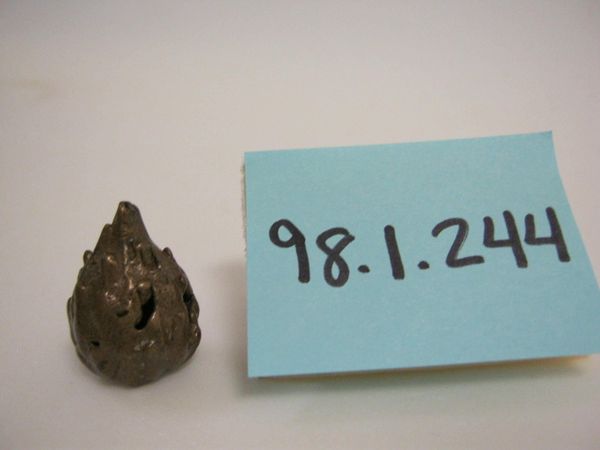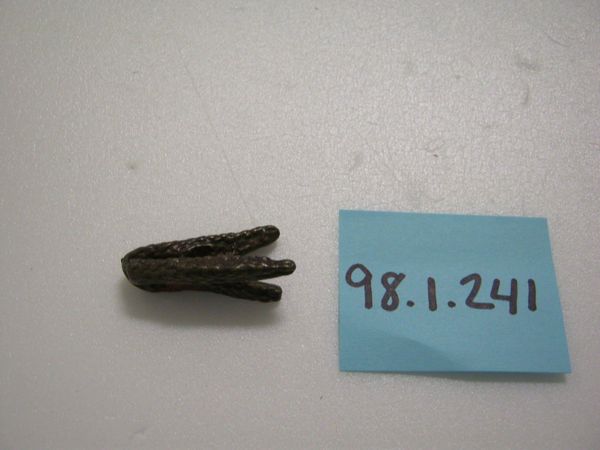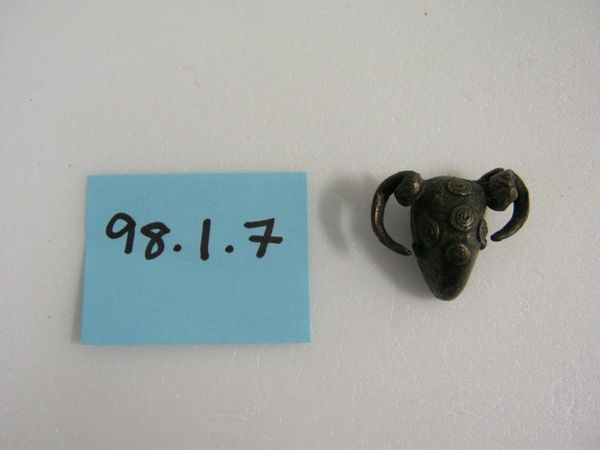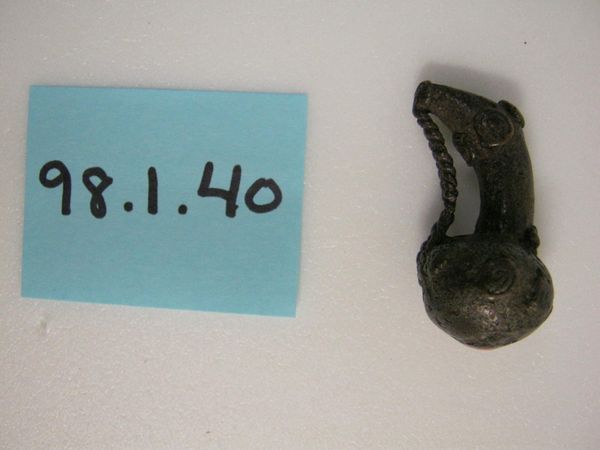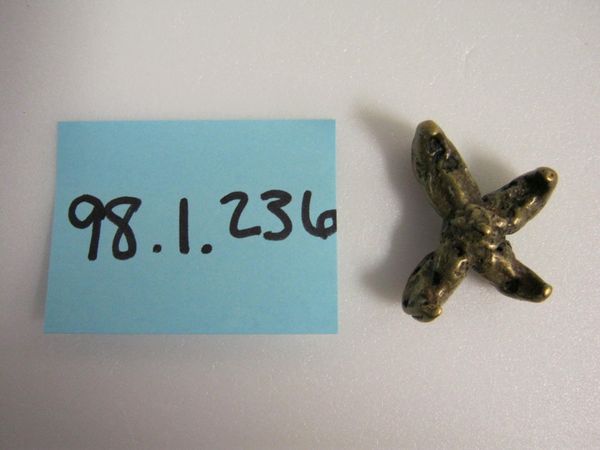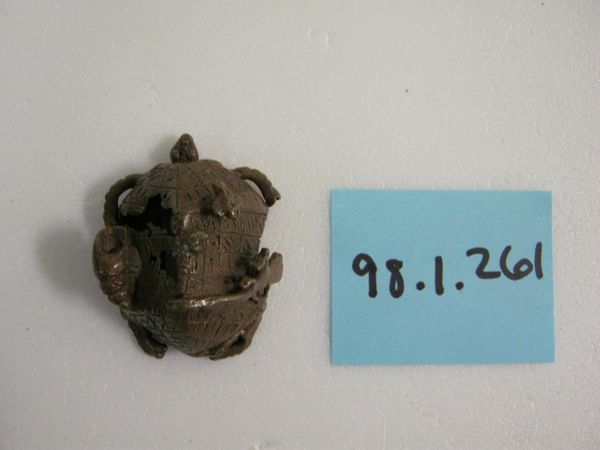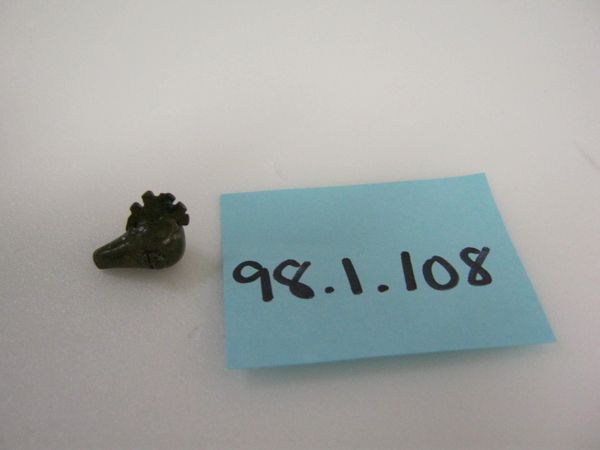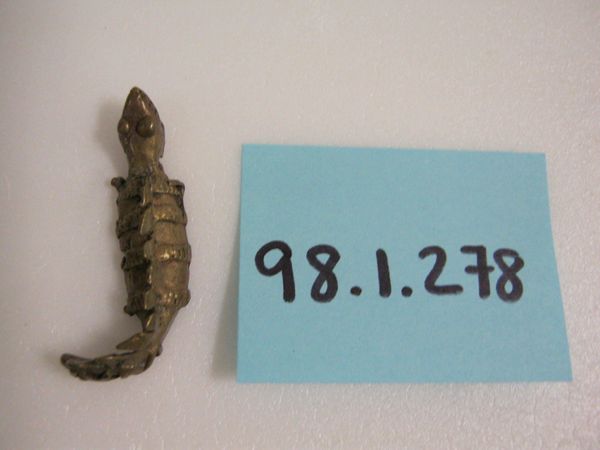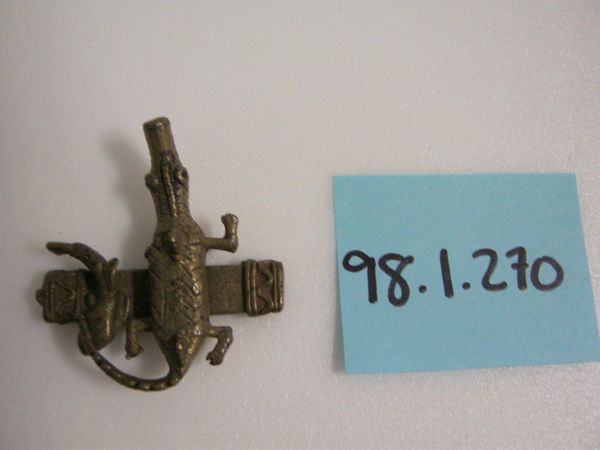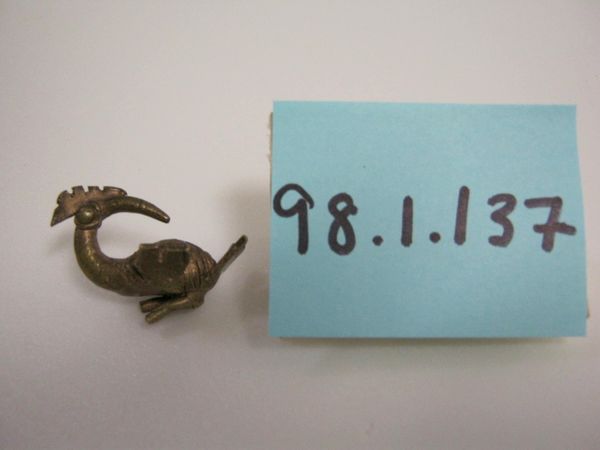![Goldweight [Crab] by Akan](/_next/image?url=https%3A%2F%2Fd2w8kbdekdi1gv.cloudfront.net%2FeyJidWNrZXQiOiAiYXJ0ZXJhLWltYWdlcy1idWNrZXQiLCAia2V5IjogImFydHdvcmtzLzRiZTM2NGZhLTNkM2ItNDdhOC04ZGZkLWJhNThkYmE3Y2U4OS80YmUzNjRmYS0zZDNiLTQ3YTgtOGRmZC1iYTU4ZGJhN2NlODlfZnVsbC5qcGciLCAiZWRpdHMiOiB7InJlc2l6ZSI6IHsid2lkdGgiOiAxOTIwLCAiaGVpZ2h0IjogMTkyMCwgImZpdCI6ICJpbnNpZGUifX19&w=3840&q=75)
brass, found-object, sculpture
#
african-art
#
brass
#
found-object
#
figuration
#
sculpture
Dimensions: 3/4 x 1 1/4 x 7/16 in. (1.91 x 3.18 x 1.11 cm)
Copyright: Public Domain
Editor: This diminutive sculpture, an Akan goldweight in the form of a crab, crafted from brass, likely dates from the 19th or 20th century. The materiality of the brass and the small scale… what strikes you most about this object? Curator: Immediately, I consider the means of production. Brass wasn’t readily available; its creation and manipulation required specialized knowledge and access to resources. How does its existence as a trade commodity affect its cultural significance? Editor: That's a perspective I hadn't considered. I was just thinking about the craftsmanship involved. Is the artistic value lessened or changed by its use in trade? Curator: Not lessened, reframed. The goldweight served a specific function within a complex economic system, embedded with symbolic value about status and reliability. Each casting represents labor, both the maker and the miner. What’s the cost of this crab’s existence? Editor: So you're saying that its value isn’t just aesthetic but is inextricably linked to the processes of its creation and use? Curator: Precisely. Consider the implications of its potential mass production versus its hand-crafted nature. Even the eventual wearing down of the brass over time through handling and trade impacts meaning! It's a material record. Editor: Thinking about it as a record really does deepen my understanding. Thanks for offering this insight! Curator: And thank you! Considering the life cycle of this object offers us unique ways of seeing.
Comments
No comments
Be the first to comment and join the conversation on the ultimate creative platform.
